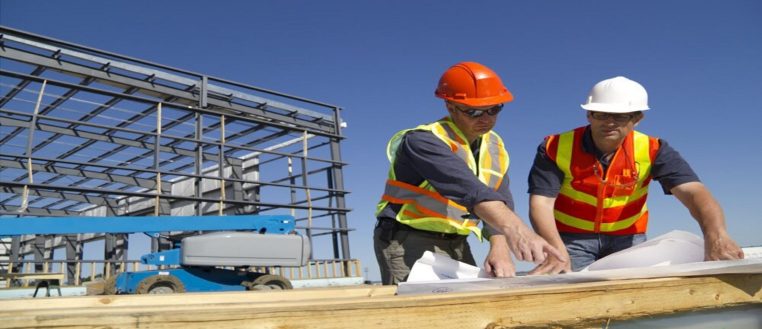Construction, a field marked by its tangible outcomes, is pivotal in shaping our surroundings. Within this sector, adherence to quality assurance becomes a necessity and a cornerstone for success. This article delves into the significance of quality assurance, exploring its benefits, key components, role in project management, real-life examples, challenges, overcoming strategies, and future trends.
Introduction
Construction quality assurance refers to the systematic process of ensuring that structures meet specified standards and regulations. It goes beyond mere compliance with codes; it is about delivering projects that stand the test of time.
Definition of Quality Assurance in Construction
Quality assurance encompasses a set of planned and systematic actions to ensure that a project meets the defined standards and expectations.
Significance of Quality Assurance
Quality assurance is not just a box to check; it’s the bedrock of a successful construction project. It ensures not only the longevity of structures but also the safety of occupants and the financial viability of the endeavor.
Benefits of Quality Assurance in Construction
Ensuring Structural Integrity
One of the primary benefits of quality assurance is the assurance of structural integrity. Rigorous testing and inspections guarantee that the construction materials and methods used are of the highest standard.
Enhancing Safety Measures
Safety is paramount in construction. Quality assurance practices include stringent safety protocols, reducing the likelihood of accidents, and ensuring a secure working environment.
Regulatory Compliance
Adherence to quality assurance practices ensures compliance with local building codes and regulations, mitigating legal risks and potential project delays.
Cost-Efficiency
Contrary to popular belief, investing in quality assurance early in the construction process proves cost-efficient in the long run. It minimizes the risk of defects and the need for costly repairs post-construction.
Key Components of Quality Assurance
Robust Planning
Quality assurance starts at the planning stage. Thoroughly planned projects with detailed specifications set the foundation for successful implementation.
Skilled Workforce
A skilled workforce is essential for quality outcomes. Training programs and hiring practices that emphasize skill and expertise contribute to the overall success of a project.
Advanced Technology
Incorporating cutting-edge technology, such as Building Information Modeling (BIM) and real-time monitoring systems, enhances the precision and efficiency of construction projects.
Regular Inspections
Frequent inspections at various stages of construction identify and rectify potential issues before they escalate. This proactive approach is a key component of quality assurance.
Role of Quality Assurance in Project Management
Minimizing Risks
Quality assurance safeguards against potential risks by identifying and addressing issues early in construction.
Timely Completion
Efficient project management, guided by quality assurance principles, ensures that construction projects are completed on time, avoiding costly delays.
Client Satisfaction
Delivering a high-quality product results in client satisfaction, fostering positive relationships and potential referrals for future projects.
Real-life Examples
Successful Projects Due to Quality Assurance
Projects prioritizing quality assurance, such as the Burj Khalifa in Dubai, stand tall not just in height but also in their resilience and structural soundness.
Consequences of Ignoring Quality Assurance
Conversely, instances of building failures highlight the dire consequences of neglecting quality assurance. The collapse of the Tacoma Narrows Bridge serves as a cautionary tale.
Challenges in Implementing Quality Assurance
Resistance to Change
Implementing quality assurance may face resistance from traditional construction practices. Addressing this resistance requires effective communication and education.
Budget Constraints
Limited budgets can pose a challenge, but allocating resources judiciously can ensure that quality assurance remains a priority.
Lack of Awareness
In some cases, stakeholders may be unaware of the importance of quality assurance. Initiatives to raise awareness and educate the industry can bridge this gap.
Overcoming Challenges
Employee Training Programs
Comprehensive training programs equip the workforce with the skills and knowledge needed to embrace quality assurance practices.
Allocation of Resources
Strategic allocation of resources, both financial and human, ensures that quality assurance measures are integrated into the construction process.
Promoting Awareness
Educational campaigns and industry seminars play a vital role in fostering awareness and understanding of the benefits of quality assurance.
Future Trends in Construction Quality Assurance
Technological Innovations
The future of quality assurance in construction lies in embracing technological innovations such as artificial intelligence, robotics, and advanced materials.
Sustainable Construction Practices
As environmental consciousness grows, integrating sustainable construction practices becomes a crucial aspect of quality assurance.
Conclusion
In conclusion, the importance of quality assurance in construction cannot be overstated. The compass guides successful projects, ensuring structural integrity, safety, and client satisfaction. Overcoming challenges through training, resource allocation, and awareness campaigns paves the way for a future where technological innovations and sustainability are at the forefront of construction quality assurance.
FAQs
What is the primary goal of quality assurance in construction?
The primary goal is to ensure that construction projects meet specified standards, ensuring structural integrity and safety.
How does quality assurance contribute to cost efficiency?
By identifying and addressing issues early, quality assurance minimizes the need for costly repairs post-construction.
What are some real-life examples of successful projects due to quality assurance?
The Burj Khalifa in Dubai is a testament to the success of quality assurance in construction.
How can budget constraints impact the implementation of quality assurance?
While budget constraints may pose challenges, strategic resource allocation ensures that quality assurance remains a priority.
What are the future trends in construction quality assurance?
Future trends include embracing technological innovations such as AI and robotics and focusing on sustainable construction practices.








